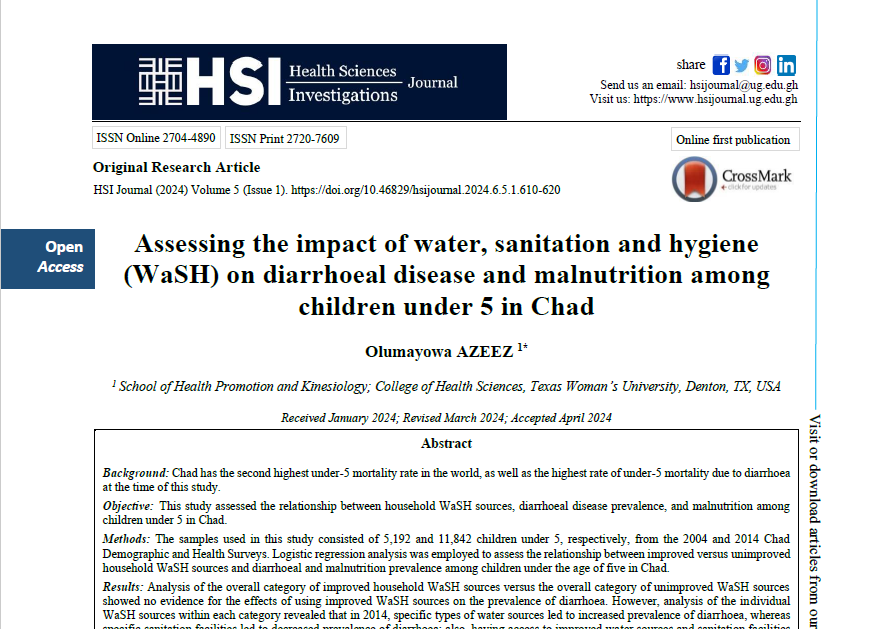Assessing the Impact of Water, Sanitation and Hygiene (WASH) on Diarrheal Disease and Malnutrition among Children Under-Five in Chad
Assessing the impact of water, sanitation and hygiene (WaSH) on diarrhoeal disease
Abstract
Background: Chad has the second highest under-5 mortality rate in the world, as well as the highest rate of under-5 mortality due to diarrhoea at the time of this study.
Objective: This study assessed the relationship between household WaSH sources, diarrhoeal disease prevalence, and malnutrition among children under 5 in Chad.
Methods: The samples used in this study consisted of 5,192 and 11,842 children under 5, respectively, from the 2004 and 2014 Chad Demographic and Health Surveys. Logistic regression analysis was employed to assess the relationship between improved versus unimproved household WaSH sources and diarrhoeal and malnutrition prevalence among children under the age of five in Chad.
Results: Analysis of the overall category of improved household WaSH sources versus the overall category of unimproved WaSH sources showed no evidence for the effects of using improved WaSH sources on the prevalence of diarrhoea. However, analysis of the in dividual WaSH sources within each category revealed that in 2014, specific types of water sources led to increased prevalence of diarrhoea, whereas specific sanitation facilities led to decreased prevalence of diarrhoea; also, having access to improved water sources and sanitation facilities significantly reduced malnutrition prevalence.
Conclusion: A better understanding of which household WaSH sources aid in decreasing the prevalence of the disease is consequential to global health professionals who operate developmental efforts so that funding can properly be allocated to making those resou rces available for intervention.


